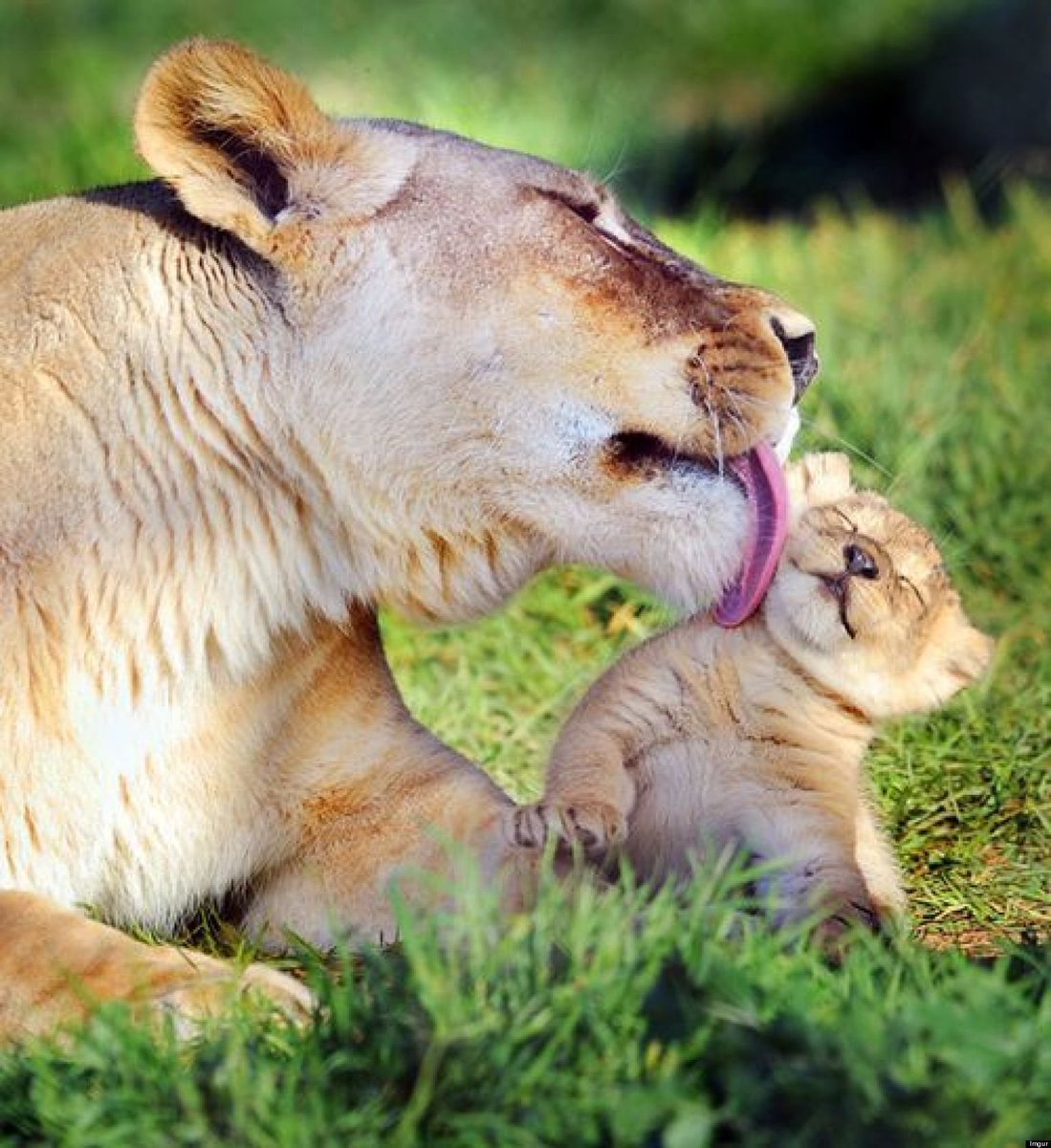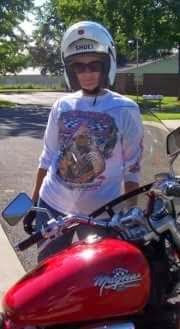
Good evening! Tomorrow afternoon, time TBA, we will be introducing Psychological Trait Theory.
To jump start the discussion, how would you describe MY personality? Your thoughts not listed here? Add in the comments!
#CRJ105 #PsychologicalTraitTheory
To jump start the discussion, how would you describe MY personality? Your thoughts not listed here? Add in the comments!
#CRJ105 #PsychologicalTraitTheory
We will be starting in about 5 minutes, so gather around friends!
#PsychologicalTraitTheory #Criminology #CRJ105
#PsychologicalTraitTheory #Criminology #CRJ105
The results are in! The internet has spoken, apparently I am perceived as ...
#PsychologicalTraitTheory #Criminology #CRJ105



#PsychologicalTraitTheory #Criminology #CRJ105




You like how I put "tough" in there?
Umm, tough grader? Maybe?
C'mon, don't let this "caring" reputation get out, I need everyone to be completely intimidated!
Ha ha, who are we kidding?!
#CRJ105 #Criminology #MoraineValley
Umm, tough grader? Maybe?
C'mon, don't let this "caring" reputation get out, I need everyone to be completely intimidated!
Ha ha, who are we kidding?!
#CRJ105 #Criminology #MoraineValley

We are going to take a deep dive into the hidden corners of your mind as we introduce #PsychologicalTraitTheory for Unit 02 of #CRJ105 #Criminology
Let's get a sense of who is on board. If you're following along live, please let me know so I can make the discussion more interactive.
If you're following live, are you ...
#CRJ105 #Criminology #MoraineValley
If you're following live, are you ...
#CRJ105 #Criminology #MoraineValley
Psychological Trait Theory encompasses various psychological aspects, including
~personality,
~intelligence,
~learning,
~and criminal behavior
#CRJ105 #Criminology #MoraineValley
~personality,
~intelligence,
~learning,
~and criminal behavior
#CRJ105 #Criminology #MoraineValley

One of my favorite aspects of psychological trait theory is the study of personality.
This concept is something that most of us can understand ... ideally we all have one!
#CRJ105 #Criminology #MoraineValley
This concept is something that most of us can understand ... ideally we all have one!
#CRJ105 #Criminology #MoraineValley
THINKING CHALLENGE: To better understand personality, would you define personality as ...
#CRJ105 #Criminology #MoraineValley
#CRJ105 #Criminology #MoraineValley
Getting back to my being "caring", but how do you know?
HOW can you tell what my personality is like?
What do I DO that seems friendly / caring?
#CRJ105 #Criminology #MoraineValley
HOW can you tell what my personality is like?
What do I DO that seems friendly / caring?
#CRJ105 #Criminology #MoraineValley
Personality is a complex arrangement of behavioral and emotional responses
#CRJ105 #Criminology #MoraineValley
#CRJ105 #Criminology #MoraineValley
The psychoanalytic theory of criminality attributes criminal behavior to:
•A conscience so overbearing that it arouses feelings of guilt
•A conscience so weak that it cannot control the individual’s impulses
•The need for immediate gratification
#CRJ105 #MoraineValley
•A conscience so overbearing that it arouses feelings of guilt
•A conscience so weak that it cannot control the individual’s impulses
•The need for immediate gratification
#CRJ105 #MoraineValley

Many CRJ students have taken psychology (great!) but consider our overview of Freud as a bit of a
(yawn)
... repeat.
Look at it this way, have you ever watched a movie more than once?
#CRJ105 #MoraineValley
(yawn)
... repeat.
Look at it this way, have you ever watched a movie more than once?
#CRJ105 #MoraineValley
Freud suggested that an individual’s psychological well-being is dependent on a healthy interaction among the id, ego, and superego
#CRJ105 #MoraineValley
#CRJ105 #MoraineValley

The #conscious mind is what you are aware of at any moment
Working closely with the conscious mind is what Freud called the #preconscious, what we might today call "available memory:"
The largest part by far is the #unconscious.
#CRJ105 #MoraineValley
Working closely with the conscious mind is what Freud called the #preconscious, what we might today call "available memory:"
The largest part by far is the #unconscious.
#CRJ105 #MoraineValley

That running dialogue of you conversing with yourself is your #conscious.
Believe it or not, the pandemic has caused most of us to talk to ourselves, out loud, more frequently!
Believe it or not, the pandemic has caused most of us to talk to ourselves, out loud, more frequently!

~ What's your mother's maiden name?
~ Your childhood phone number?
~ The make & model of your first car?
Information that you can recall, fairly easily, is your #preconscious
#CRJ105 #MoraineValley
~ Your childhood phone number?
~ The make & model of your first car?
Information that you can recall, fairly easily, is your #preconscious
#CRJ105 #MoraineValley

And since I said we were getting deep, have you ever lusted for someone ... you know you shouldn't?
#CRJ105 #MoraineValley
#CRJ105 #MoraineValley
Sigmund Freud (1856–1939), the founder of psychoanalysis, suggested that an individual’s psychological well-being is dependent on a healthy interaction among the id, ego, and superego
#CRJ105 #MoraineValley
#CRJ105 #MoraineValley

The id, ego, and superego are the three basic components of the human psyche, according to Freud
#CRJ105 #MoraineValley
#CRJ105 #MoraineValley

The #id consists of powerful urges and drives for gratification and satisfaction.
The #ego is the executive of the personality, acting as a moderator between the superego and id.
The #superego acts as a moral code or conscience.
#CRJ105 #MoraineValley



The #ego is the executive of the personality, acting as a moderator between the superego and id.
The #superego acts as a moral code or conscience.
#CRJ105 #MoraineValley




The id does have it's benefits.
I often liken the id to the "Veruca Salt" from Willy Wonka of our personality, it pushes us to pursue our own interests.
#CRJ105
I often liken the id to the "Veruca Salt" from Willy Wonka of our personality, it pushes us to pursue our own interests.
#CRJ105
Freud proposed that criminality may result from an overactive superego or conscience.
In treating patients, he noticed that those who were suffering from unbearable guilt committed crimes in order to be apprehended and punished.
#CRJ105 #MoraineValley
In treating patients, he noticed that those who were suffering from unbearable guilt committed crimes in order to be apprehended and punished.
#CRJ105 #MoraineValley

Despite criticism, three basic principles appeal to psychologists who study criminality.
The actions and behavior of an adult are understood in terms of childhood development
#CRJ105 #MoraineValley
The actions and behavior of an adult are understood in terms of childhood development
#CRJ105 #MoraineValley

Behavior and unconscious motives are intertwined, and their interaction must be unraveled if people are to understand criminality.
Criminality is essentially a representation of psychological conflict.
#CRJ105 #MoraineValle
Criminality is essentially a representation of psychological conflict.
#CRJ105 #MoraineValle

THINKING CHALLENGE: In Freudian terms, how would you describe your personality?
#CRJ105 #MoraineValley
#CRJ105 #MoraineValley
THINKING CHALLENGE: In Freudian terms, how would you describe your personality?
#CRJ105 #MoraineValley
#CRJ105 #MoraineValley
Psychologist Lawrence #Kohlberg, who pioneered moral developmental theory, has found that moral reasoning develops in three phases
#CRJ105 #MoraineValley
#CRJ105 #MoraineValley

Preconventional level: Children’s moral rules and moral values consist of dos and don’ts to avoid punishment
~ Don't hit your sister
~ Don't talk back
~ Don't tell a lie
~ Don't cheat
#CRJ105 #MoraineValley
~ Don't hit your sister
~ Don't talk back
~ Don't tell a lie
~ Don't cheat
#CRJ105 #MoraineValley

Conventional level: Adolescents typically reason at the conventional level. Here individuals believe in and have adopted the values and rules of society. Moreover, they seek to uphold these rules.
~ Sharing benefits
~ Hate hurts
~ Be kind
#CRJ105 #MoraineValley
~ Sharing benefits
~ Hate hurts
~ Be kind
#CRJ105 #MoraineValley

Post-conventional level: Individuals examine customs and social rules according to their own sense of universal human rights, moral principles, and duties.
~ Marijuana is okay/not okay
~ Little white lies don't count
#CRJ105 #MoraineValley
~ Marijuana is okay/not okay
~ Little white lies don't count
#CRJ105 #MoraineValley

According to Kohlberg and his colleagues, most delinquents and criminals reason at the #preconventional level.
Kohlberg has argued that basic moral principles and social norms are learned through social interaction and role-playing
#CRJ105 #MoraineValley
Kohlberg has argued that basic moral principles and social norms are learned through social interaction and role-playing
#CRJ105 #MoraineValley

Research has demonstrated that a phenomenon important to social development takes place shortly after the birth of any mammal: the construction of an emotional bond between the infant and its mother.
#CRJ105 #MoraineValley
#CRJ105 #MoraineValley

British psychiatrist John Bowlby has studied both the need for warmth and affection from birth onward and the consequences of not having it
#CRJ105 #MoraineValley



#CRJ105 #MoraineValley




Bowlby contends a child needs to experience a warm, intimate, continuous relationship with either a mother or a mother substitute in order to be securely attached. When a child is separated from the mother or is rejected by her, anxious attachment results
#CRJ105 #MoraineValley
#CRJ105 #MoraineValley
And WHO said they had NO reaction to the scene in which Dumbo was taken from his mother earlier this week???
I don't believe it!
#CRJ105 #MoraineValley
I don't believe it!
#CRJ105 #MoraineValley
Joan McCord has investigated the relationship between family atmosphere:
~parental self-confidence,
~deviance,
~affection
~and delinquency
#CRJ105 #MoraineValley



~parental self-confidence,
~deviance,
~affection
~and delinquency
#CRJ105 #MoraineValley




Social learning theory maintains that delinquent behavior is learned through the same psychological processes as any other behavior
#CRJ105 #MoraineValley



#CRJ105 #MoraineValley




THINKING CHALLENGE: What's one of the most valued lessons you learned from your parents?
#CRJ105 #SocialLearning
#CRJ105 #SocialLearning

Social learning theory maintains that delinquent behavior is learned through the same psychological processes as any other behavior
#CRJ105 #MoraineValley
#CRJ105 #MoraineValley

What is a SKILL that you have ... that you can teach other people?
Believe it or not, I could teach you how to ride a MOTORCYCLE!
*Thanks to MY dad!
#CRJ105 #MoraineValley



Believe it or not, I could teach you how to ride a MOTORCYCLE!
*Thanks to MY dad!
#CRJ105 #MoraineValley




Albert Bandura, a leading proponent of social learning theory, argues that individuals learn violence and aggression through behavioral modeling
#CRJ105 #MoraineValley
#CRJ105 #MoraineValley

Albert Bandura: Children learn how to behave by fashioning their behavior after that of others
#CRJ105 #MoraineValley
#CRJ105 #MoraineValley

What people learn from direct experience is determined by what they themselves do and what happens to them.
#CRJ105 #MoraineValley
#CRJ105 #MoraineValley

While violence and aggression are learned behaviors, they are not necessarily expressed until they are elicited in one of several ways.
Albert Bandura describes the factors that elicit behavioral responses as “instigators"
#CRJ105 #MoraineValley



Albert Bandura describes the factors that elicit behavioral responses as “instigators"
#CRJ105 #MoraineValley




If you have become violent, where do you believe that you learned how to do so?
#CRJ105 #MoraineValley
#CRJ105 #MoraineValley
Ernest Burgess and Ronald Akers combined Bandura’s psychologically based learning theory with Edwin Sutherland’s sociologically based differential association theory to produce the theory of differential association-reinforcement
#CRJ105 #MoraineValley
#CRJ105 #MoraineValley

Social learning theory helps in understanding why some individuals who engage in violent and aggressive behavior do so:
~They learn to behave that way.
~Perhaps something within the personality creates a susceptibility to aggressive or violent models in the first place.
~They learn to behave that way.
~Perhaps something within the personality creates a susceptibility to aggressive or violent models in the first place.

What makes you, you? Psychologists like to talk about our traits, or defined characteristics that make us who we are.
But Brian Little is more interested in moments when we transcend those traits
#CRJ105 #MoraineValley
But Brian Little is more interested in moments when we transcend those traits
#CRJ105 #MoraineValley
Traditionally, the medical profession viewed mental illness as an absolute condition or status ... either one is afflicted with psychosis or one is not.
#CRJ105 #MoraineValley
#CRJ105 #MoraineValley

Psychologists have found that psychopaths, like Hans Eysenck’s extroverts, have a low internal arousal level; thus, psychopaths constantly seek external stimulation, are less susceptible to learning by direct experience
#CRJ105 #MoraineValley
#CRJ105 #MoraineValley

Mental illness should not be considered apart from mental health—the two exist on the same continuum.
At various times in people’s lives, they move along the continuum from health toward illness
#CRJ105 #MoraineValley

At various times in people’s lives, they move along the continuum from health toward illness
#CRJ105 #MoraineValley


The choice between crime and conventional behavior is closely linked to individual biological and psychological traits and to social factors such as family and school experiences
#CRJ105 #MoraineValley
#CRJ105 #MoraineValley

It has been argued that the insanity defense is a prisoner of a host of myths and symbols rooted in medieval folklore and fundamentalist visions of mental illness and crime.
#CRJ105 #MoraineValley
#CRJ105 #MoraineValley

Man claims a devil with the voice of Barry White told him to shoot another man
#CRJ105 #MoraineValley
#CRJ105 #MoraineValley
According to Wilson and Herrnstein, argue that behavior results from a person’s perception of the potential rewards and/or punishments that go along with a criminal act.
#CRJ105 #MoraineValley
#CRJ105 #MoraineValley

In class, we watch Beware The Slenderman documentary to take a look at how mental health interweaves with crime
#CRJ105 #MoraineValley
#CRJ105 #MoraineValley
I feel really good about the material we covered. We could discuss Psychology for the entire 16 weeks of the semester.
What aspects of today's discussion were review for you?
#CRJ105 #MoraineValley
What aspects of today's discussion were review for you?
#CRJ105 #MoraineValley
Was there any aspect of Psychological Trait Theory that was unexpected or completely new to you?
#CRJ105 #MoraineValley
#CRJ105 #MoraineValley
If you made it this far, include your favorite momma & baby animal pictures with your response for some extra credit. Bonus points if you include YOUR baby photo!
#CRJ105 #MoraineValley
#CRJ105 #MoraineValley
Thanks, all! I look forward to my Juvenile Delinquency & Policing discussions later this week.
#Ciao
#Ciao
• • •
Missing some Tweet in this thread? You can try to
force a refresh















